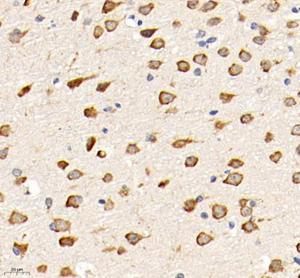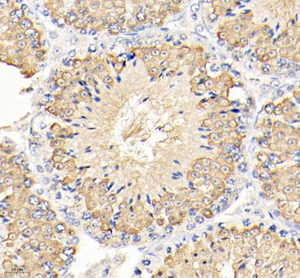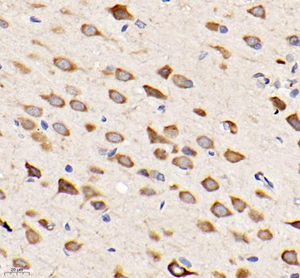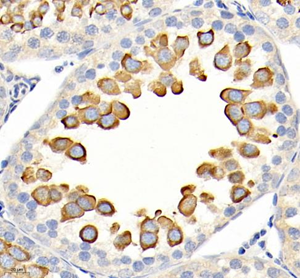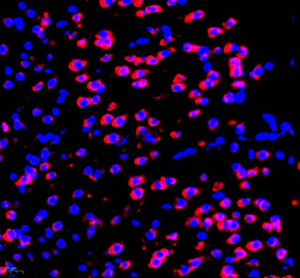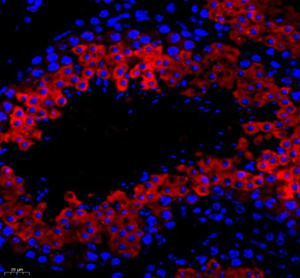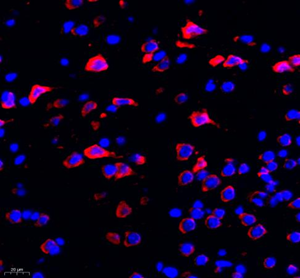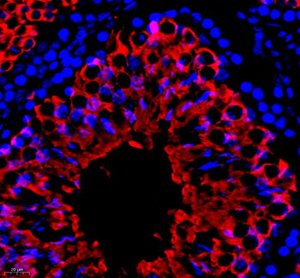Anti-Apelin Rabbit pAb (100 μl)
| Reactivity: | M,R |
| Applications: | IHC/IF |
| Host Species: | Rabbit |
| Clonality: | Polyclonal |
| Full Name: | Apelin rabbit polyclonal antibody |
Gene Name: | Apelin |
Synonyms: | APJ endogenous ligand, Apelin-36, Apelin-31, Apelin-28, Apelin-13, Apln, Apel, XNPEP2, AGTRL1 ligand |
Immunogen: | Recombinantproteincorresponding to Mouse Apelin |
Isotype: | IgG |
Purity: | Affinity purification |
Subcellular location: | Secreted |
Uniprot ID: | Q9R0R4, Q9R0R3 |
Product Usage Information
Applications | Species | Dilution | Positive Sample |
IHC/IF | Mouse, Rat | 1: 600-1: 1400 | brain, testis |
Background
Apelin, isolated from bovine stomach tissue extractsis, is recognized as the endogenous ligand of the angiotensin-like-receptor 1 (APJ), and the human orphan G-protein-coupled receptor. Apelin is widely expressed in various organs such as the heart, lung, kidney, liver, adipose tissue, gastrointestinal tract, brain, adrenal glands, endothelium, and human plasma. Apelin has been found to be a potent stimulator of cardiac contractility and may function in the regulation of the cardiovascular system.
Images
| Immunohistochemistry of paraffin embedded mouse brain using Apelin (GB111669) at dilution of 1:700 (400x lens) |
| Immunohistochemistry of paraffin embedded mouse testis using Apelin (GB111669) at dilution of 1:700 (400x lens) |
| Immunohistochemistry of paraffin embedded rat brain using Apelin (GB111669) at dilution of 1:700 (400x lens) |
| Immunohistochemistry of paraffin embedded rat testis using Apelin (GB111669) at dilution of 1:700 (400x lens) |
| Immunofluorescence of paraffin embedded mouse brain using Apelin (GB111669) at dilution of 1:650 (400x lens) |
| Immunofluorescence of paraffin embedded mouse testis using Apelin (GB111669) at dilution of 1:650 (400x lens) |
| Immunofluorescence of paraffin embedded rat brain using Apelin (GB111669) at dilution of 1:650 (400x lens) |
| Immunofluorescence of paraffin embedded rat testis using Apelin (GB111669) at dilution of 1:650 (400x lens) |
Storage
| Storage | Store at -20°C for one year. Avoid repeated freeze/thaw cycles. |
| Storage Buffer | PBS with 0.02%sodium azide,100 μg/ml BSA and 50% glycerol. |

